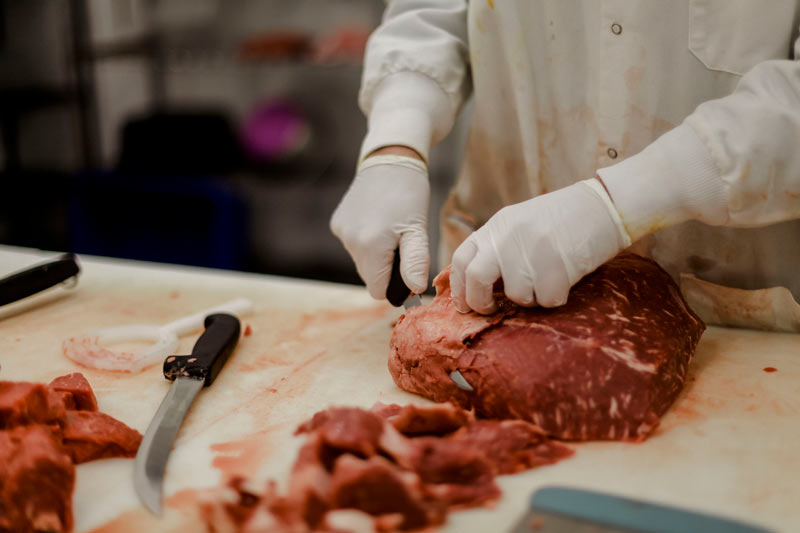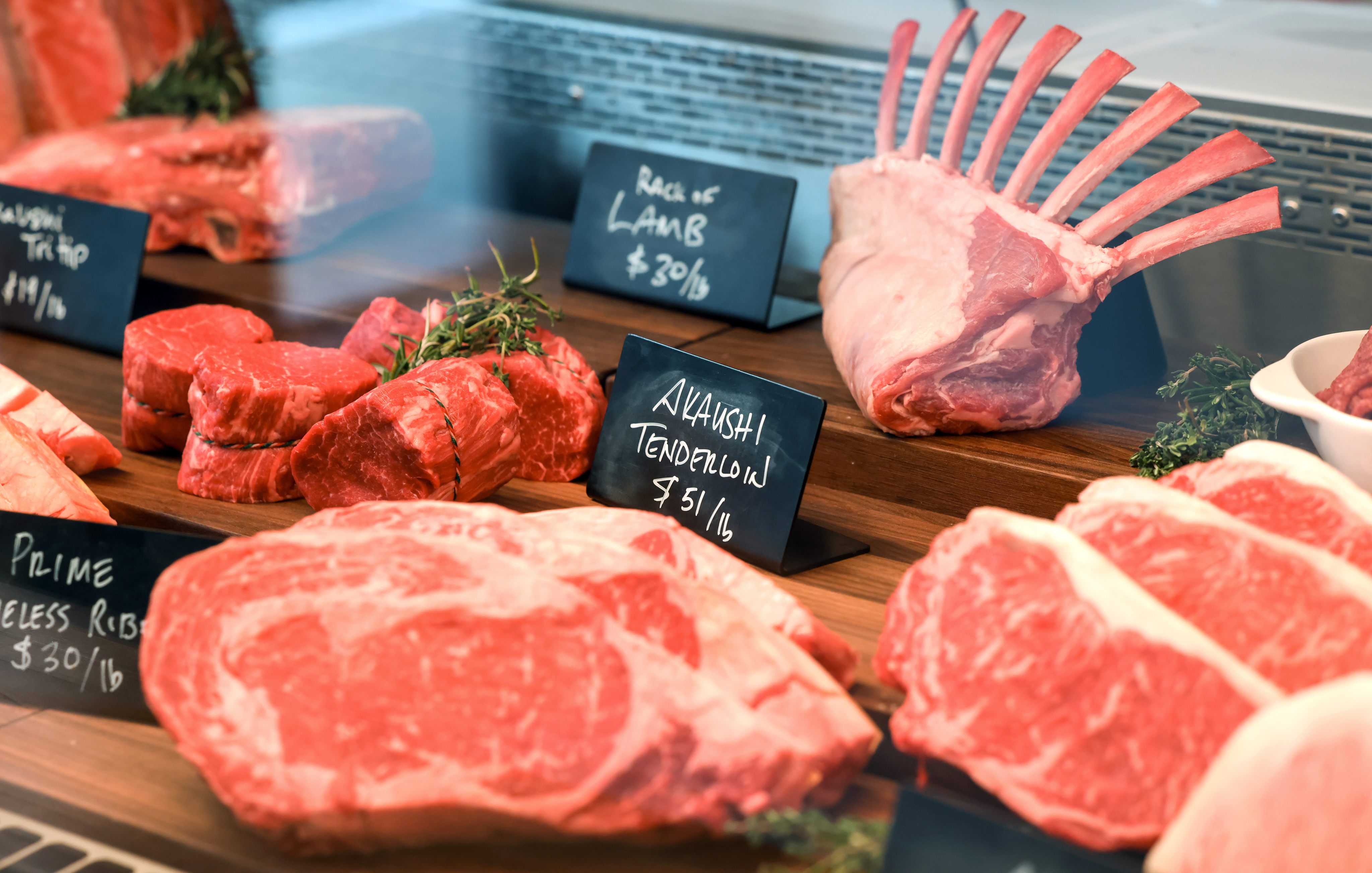Obtain the very best Bargains on Fresh Meat at Bagley Farms Meat Market Edwardsville IL
Obtain the very best Bargains on Fresh Meat at Bagley Farms Meat Market Edwardsville IL
Blog Article
Uncover the Art of the Butcher's Cut in a Modern Meat Market
In the ever-evolving landscape of modern meat markets, the butcher's cut has transcended its typical origins, combining age-old craftsmanship with contemporary techniques. Today's butchers are not merely processors of meat; they are knowledgeable artisans who stress sustainability and honest sourcing. Their knowledge in picking and preparing cuts customized to particular culinary needs provides an unparalleled dining experience. Yet, what truly sets the contemporary butcher apart is their ability to create a deeper link in between customers and the beginnings of their meat. Just how do these masters balance tradition with advancement, and what effects does this have for the future of meat usage?
Advancement of Butchery Techniques
The development of butchery strategies mirrors a rich tapestry of technology and adaptation driven by innovations in innovation, changes in consumer need, and a much deeper understanding of meat scientific research. Historically, butchery was a craft passed down with generations, with approaches developed over centuries to maximize yield and flavor. However, the commercial transformation introduced automation, changing traditional practices and enabling massive handling.
The mid-20th century saw butchery methods further improved by clinical understandings right into muscle mass biology and meat aging, enhancing both inflammation and preference. Developments like vacuum cleaner packaging and refrigeration expanded product shelf-life, enabling butchers to branch out offerings and improve top quality control. This period likewise marked the rise of customized devices, such as band saws and meat slicers, which raised precision and effectiveness in meat handling.

The 21st century has actually introduced electronic modern technology into the butchery realm. Digital systems currently aid in tracking pet provenance and enhancing cuts to satisfy details consumer choices. In addition, a renewal in artisanal butchery has arised, blending typical skills with contemporary expertise to satisfy consumers looking for moral and sustainable meat choices. This evolution highlights a vibrant interaction in between practice and innovation, meeting contemporary demands while maintaining the craft's heritage.
Recognizing Meat Cuts
Understanding the details of meat cuts is vital for both butchers and consumers seeking quality and value. Each cut originates from a various component of the pet, imparting unique tastes, structures, and cooking approaches - bagley farms meat market edwardsville il. Mastery of these distinctions not just boosts cooking experiences but likewise makes the most of the utility of each carcass. For butchers, specific cuts reflect skill and respect for the craft, making sure marginal waste and ideal yield.

Recognizing muscle composition is important; muscular tissues utilized more regularly by the animal tend to be harder and are best matched for slow cooking techniques, while less-used muscular tissues, like those discovered in the loin, are more tender and suitable for cooking or roasting. Familiarity with these differences encourages customers to make educated options, enhancing their cooking undertakings.
Selecting Top Quality Meat
Choosing the best meat involves greater than his comment is here just selecting a visually attractive piece from the screen. bagley farms meat market edwardsville il. The art of picking quality meat calls for a discerning eye and knowledge of certain features that symbolize freshness and excellence. Pay focus to the color; beef needs to have a brilliant, cherry-red hue, while lamb should show a soft pink tone, and pork a pale pink. This suggests the meat is fresh and hasn't been revealed to oxygen for also lengthy.
Second of all, take into consideration the marbling, which describes the white streaks of fat within the muscular tissue. Correct marbling is an essential indication of tenderness and flavor, as it melts during food preparation, boosting the meat's juiciness. Keep in mind, greater marbling often correlates with superior high quality cuts, such as USDA Prime.
Appearance is an additional critical factor; meat ought to really feel firm to the touch, not slimed or overly soft. Additionally, be conscious of the aroma. Fresh meat ought to have a tidy, neutral scent, without any type of sour or repulsive odors.
Matching Cuts With Food Preparation Approaches

On the other hand, harder cuts like brisket and chuck roast are rich in collagen, which breaks down into gelatin when cooked slowly. These cuts are optimal for braising or slow-moving roasting, enabling the meat to soften with time and create deep, complicated flavors. In a similar way, cuts such as brief ribs and pork shoulder get on well with slow-cooking approaches, where prolonged cooking times transform their robust textures into delicious meals.
Lamb shanks and oxtail, which call for prolonged cooking to tenderize, are excellent candidates for stewing or slow-moving simmering. These techniques coax out rich, hearty flavors while maintaining wetness. By understanding the unique attributes of each cut, cooks and home cooks alike can raise their culinary creations, guaranteeing each recipe is both pleasing and remarkable.
The Butcher's Function Today
Browsing the developing landscape of the modern meat market, the butcher's duty today expands past mere preparation of cuts. Contemporary butchers are cooking craftsmens, teachers, and advocates for sustainable methods.
In enhancement to crafting exact cuts, butchers currently involve directly with customers, providing cooking suggestions and tailoring options to suit private needs and choices. Their know-how in meat aging, marbling, and taste accounts equips consumers to make enlightened choices, boosting their culinary experiences. This article source tailored solution exhibits the butcher's developing function as a trusted expert in the cooking link area.
Furthermore, butchers are crucial in reducing waste, using entire pets to produce diverse products such as sausages and supplies. This thorough approach not just appreciates the animal however additionally straightens with modern sustainability goals. This way, the contemporary butcher symbolizes both practice and technology, adjusting to an ever-changing market while preserving the creativity and stability of their craft.
Final Thought
Proficiency in comprehending varied meat cuts and top quality signs empowers butchers to give enlightened recommendations, aligning certain cuts with optimal cooking methods. By honoring historic techniques while accepting modern demands, the butcher's duty continues to be vital in today's advanced meat market.
Report this page